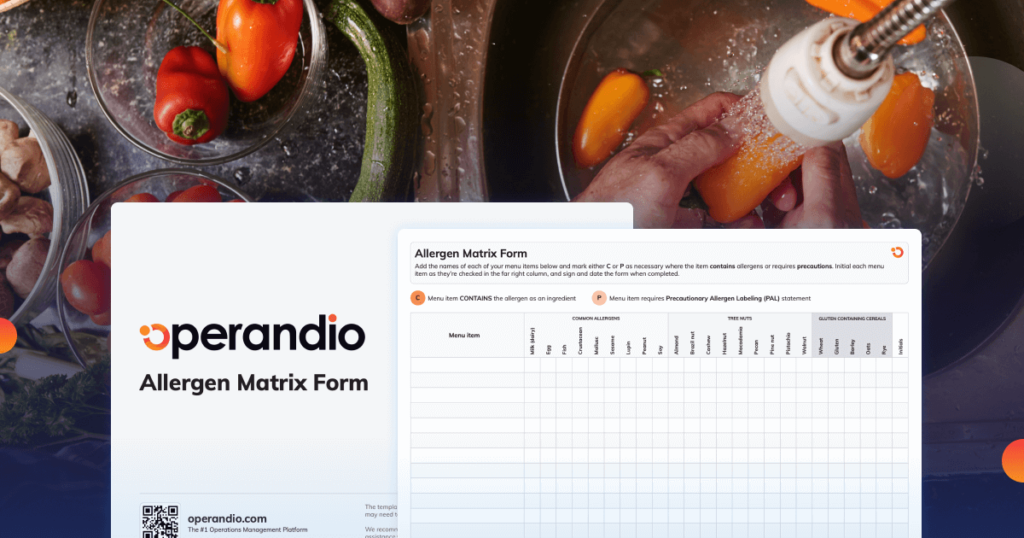The Importance of an Allergen Matrix in Restaurants
Clean customer-facing areas, including tables, countertops, and shared spaces, are vital for any hospitality business. They not only build trust that everything is clean behind the scenes but are also a critical part of the customer experience and key to passing health inspections
A clear, repeatable structure is vital to keeping the front of the house clean. This way, everyone in the business knows what needs to be done, and managers and staff can track progress daily.
Luckily, we have created a template with everything you need as a starting point to stay on top of your front-of-house cleaning.

Why is an allergen matrix important?
An allergen matrix is a document that lists menu items alongside allergens they may contain or encounter through cross-contamination. It is a crucial tool for restaurants to manage dietary requirements while guaranteeing customer safety. The key benefits include:
Improved Staff Confidence – When team members have easy access to clear allergen information, they can confidently answer customer queries and reduce the risk of mistakes.
Customer Trust and Safety – For people with allergies, they are an everyday worry. Diners need reassurance that their allergens are taken seriously. A well-maintained allergen matrix builds credibility and improves the dining experience.
Compliance with Allergen Labeling Laws – Many regions have strict laws requiring transparency about food allergens. An allergen matrix helps businesses stay compliant and avoid legal risks.
Risks of not having an allergen matrix
An allergen matrix is an essential step in ensuring your restaurant stays safe when it comes to allergies. Not having a structured allergen tracking system can lead to several risks, including:
Reputation Damage – A single allergen-related incident can cause lasting damage to customer trust and online reviews, affecting long-term business success.
Miscommunication – Without a clear reference point, staff may provide incorrect information to customers, leading to serious health consequences.
Cross-Contamination – Failure to track allergens properly increases the chance of cross-contact in the kitchen, which can trigger allergic reactions.
Regulatory Penalties—Non-compliance with food safety regulations can result in fines, lawsuits, or even the closure of the business.
Streamline allergen management with Operandio
To help restaurants stay ahead, Operandio has developed a comprehensive allergen matrix template.
The matrix includes key details such as:
Menu Item Name – Each dish should be listed to ensure easy identification.
Allergens Present – This section identifies common allergens in the dish, such as nuts, dairy, gluten, soy, shellfish, and more.
Cross-Contamination Risk – Indicates potential exposure from shared equipment or preparation areas.
Modifications/Alternatives – Lists possible changes that can make a dish safe for allergy-sensitive guests.
Last Updated Date – Helps track when the information was last reviewed to ensure accuracy.
Implementing an Allergen Matrix Form is a fantastic first step toward creating a safer, more inclusive dining experience. It protects guests, empowers staff, and safeguards your business.
However, digitizing your forms is always the most efficient and safe way. With Operandio, you can digitalize allergen tracking and all your restaurant processes. Book a demo today to learn how we can help you streamline food safety and compliance.
Download PDF

